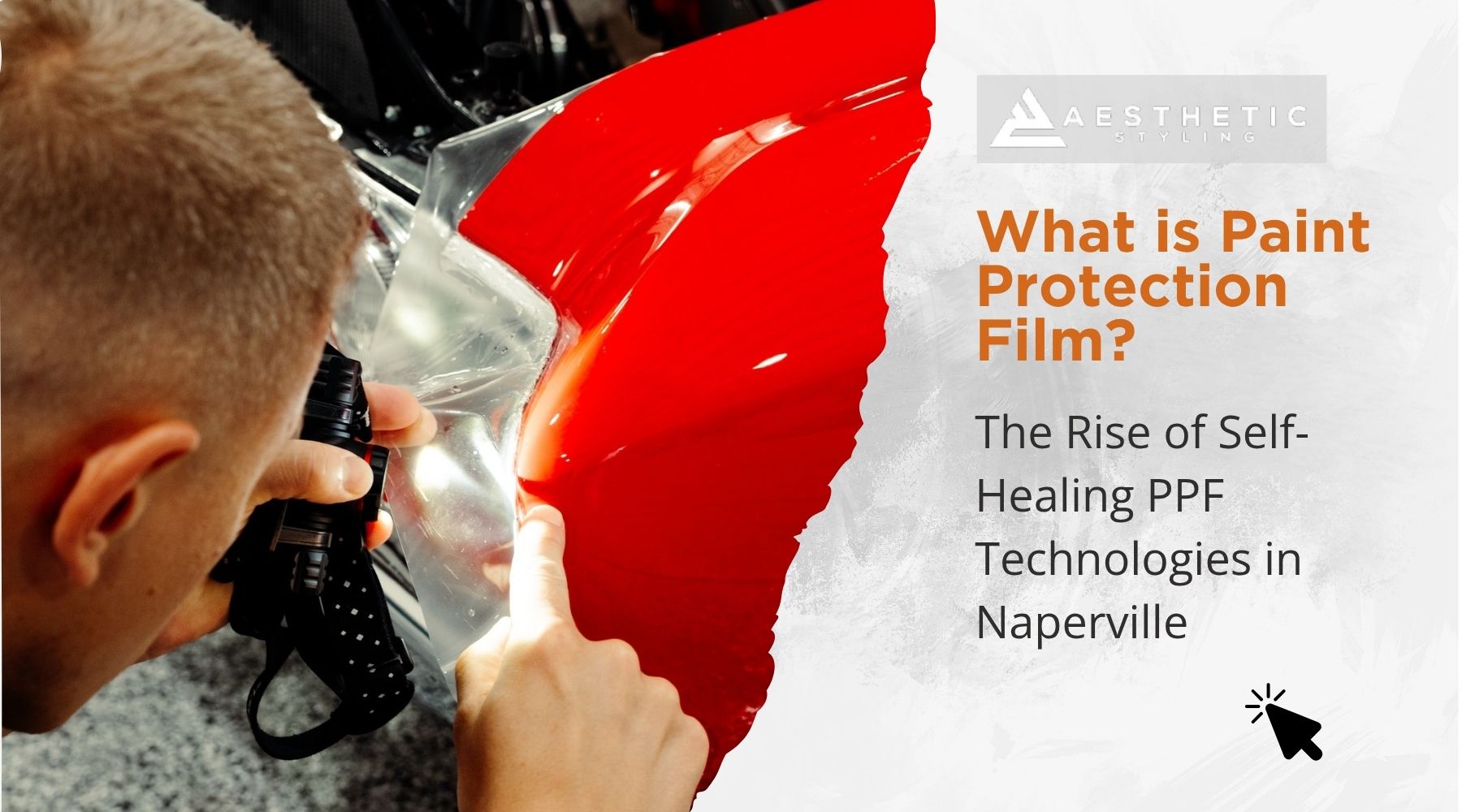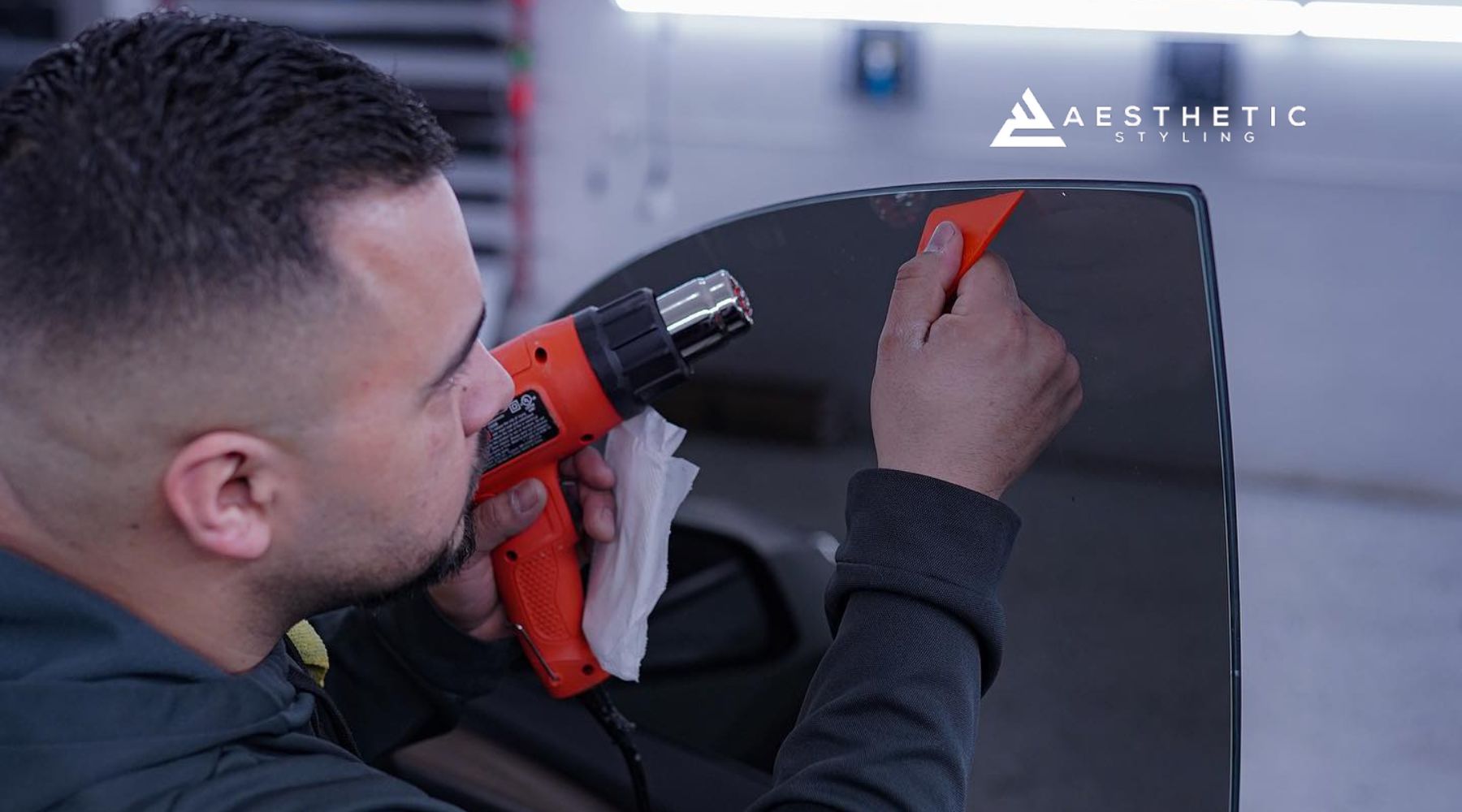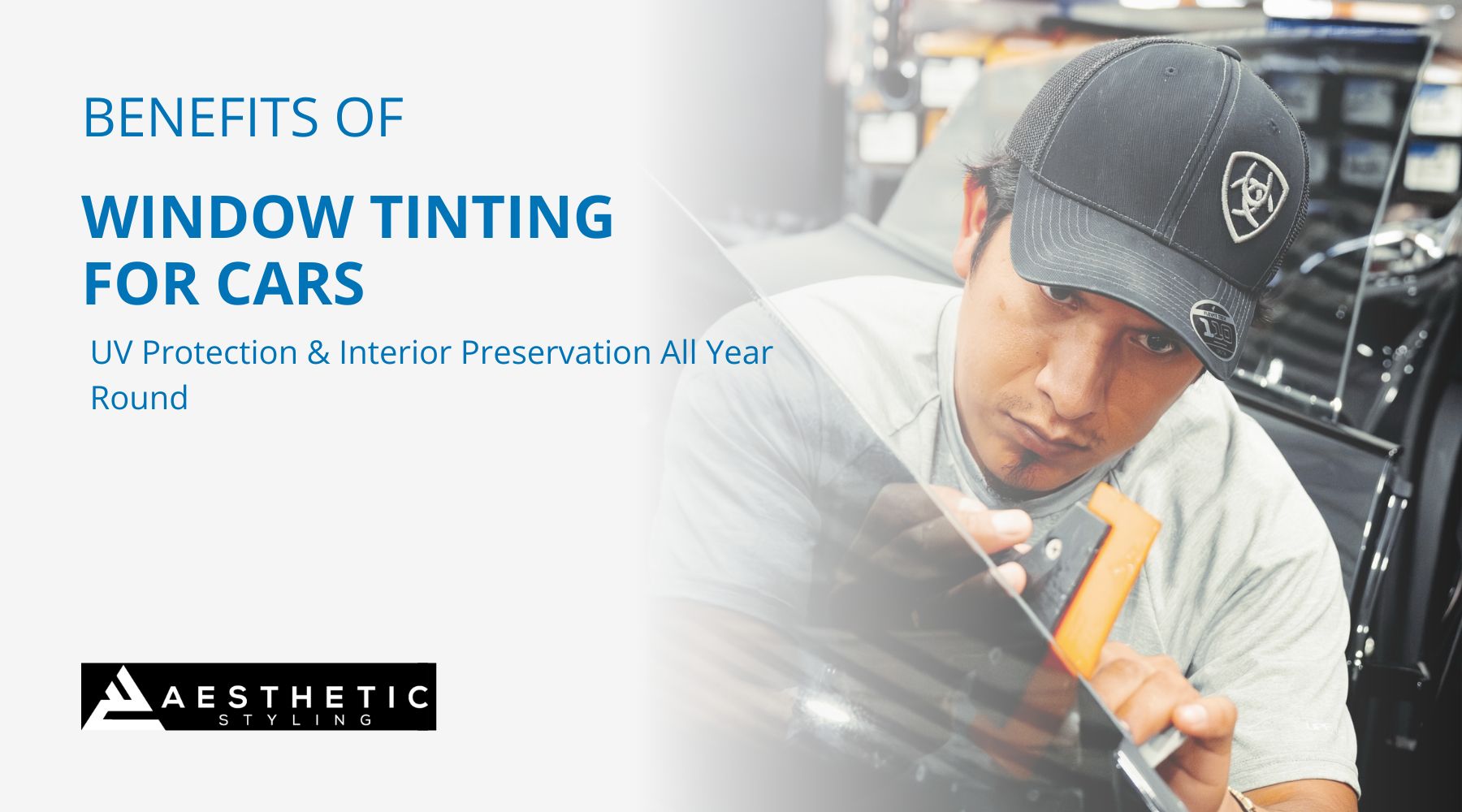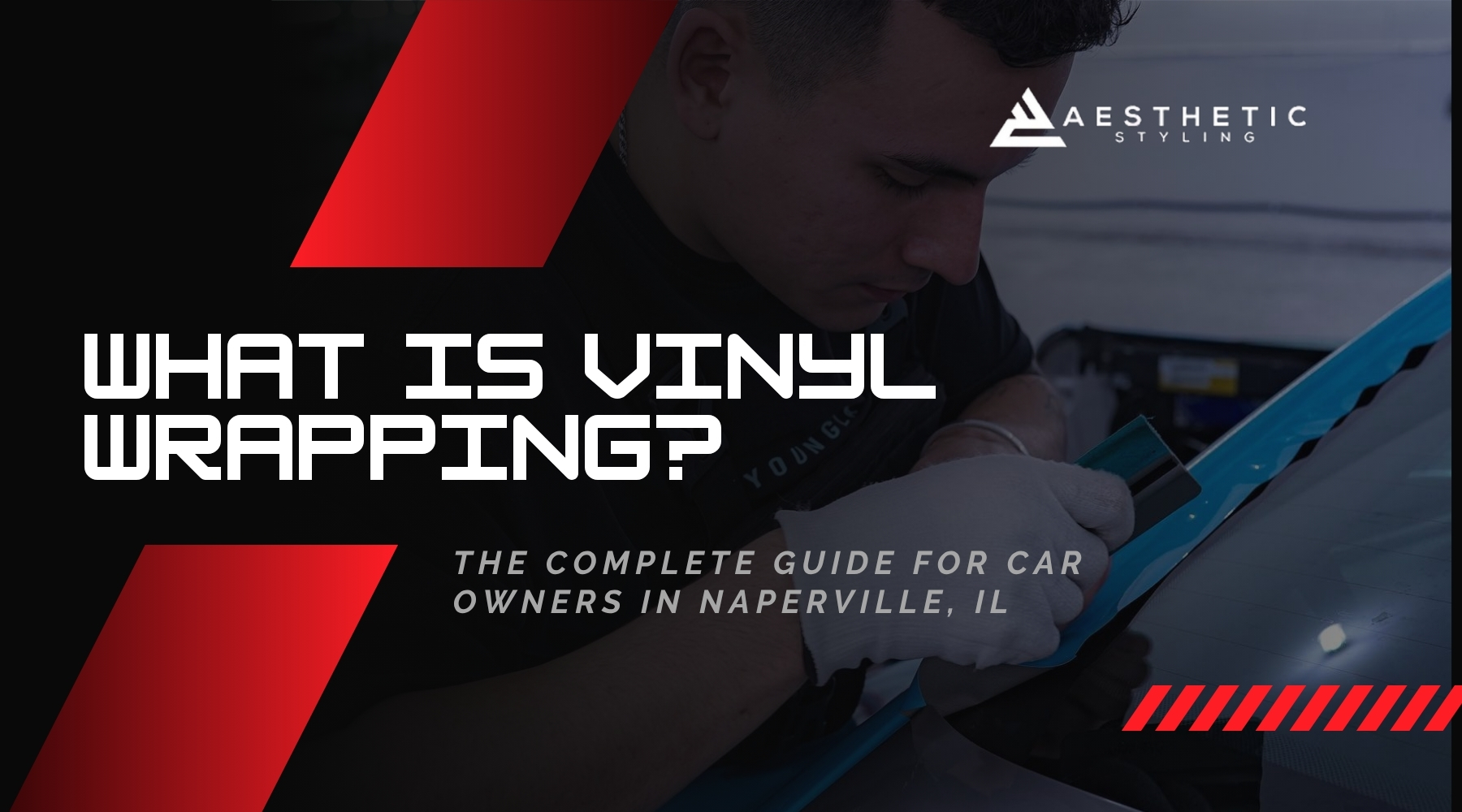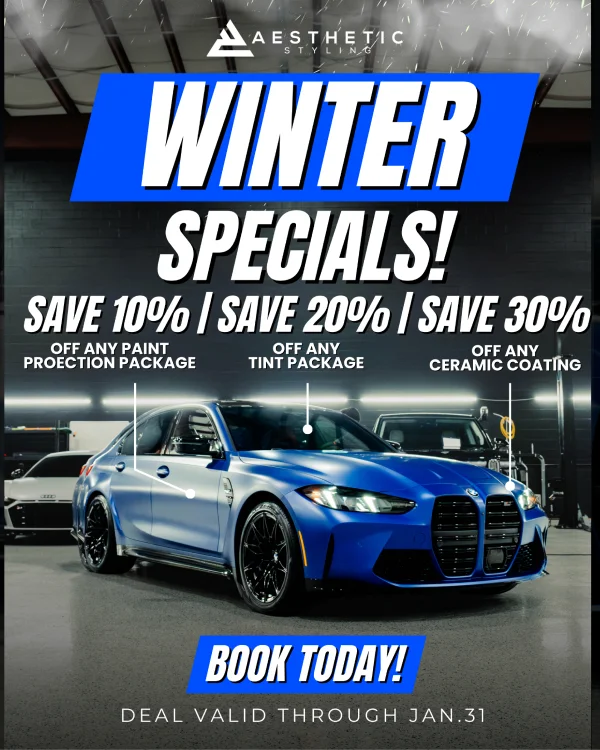Modern car ownership isn’t just about driving—it’s about preserving your investment. Whether you’re cruising through Parker, Colorado, or navigating the streets of Naperville, your vehicle is constantly exposed to elements that dull its shine and diminish its value. This is where Paint Protection Film (PPF) comes in. But what exactly is it, and why is self-healing PPF gaining popularity in places like Naperville?
Let’s explore how this automotive innovation is reshaping vehicle protection.
What is Paint Protection Film?
Paint Protection Film (PPF), commonly referred to as a “clear bra,” is a high-performance thermoplastic urethane film professionally applied to a vehicle’s painted surfaces to protect against a wide range of environmental and physical hazards. It’s a modern solution born out of necessity—initially developed by the U.S. military to protect helicopter rotor blades from debris and abrasion during combat missions. Today, PPF is a leading-edge product in the automotive detailing world, offering both practical protection and aesthetic preservation.
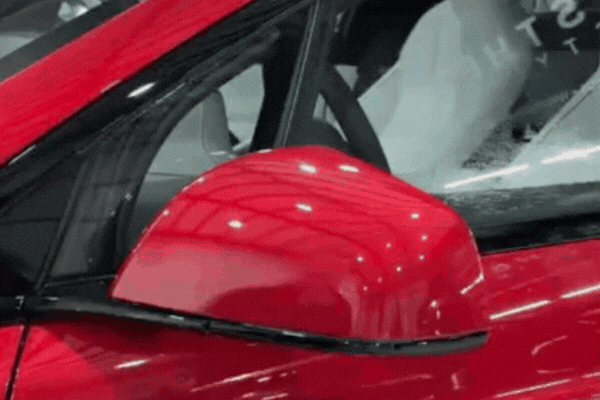
This film is engineered to be optically transparent, ultra-thin, and highly durable, designed to serve as an invisible armor for your car. It acts as a barrier between your vehicle’s paint and damaging forces such as road debris, UV rays, chemicals, and scratches. By absorbing impacts and deflecting abrasions, it helps maintain a vehicle’s factory finish and resale value without compromising its appearance.
Common Hazards PPF Defends Against:
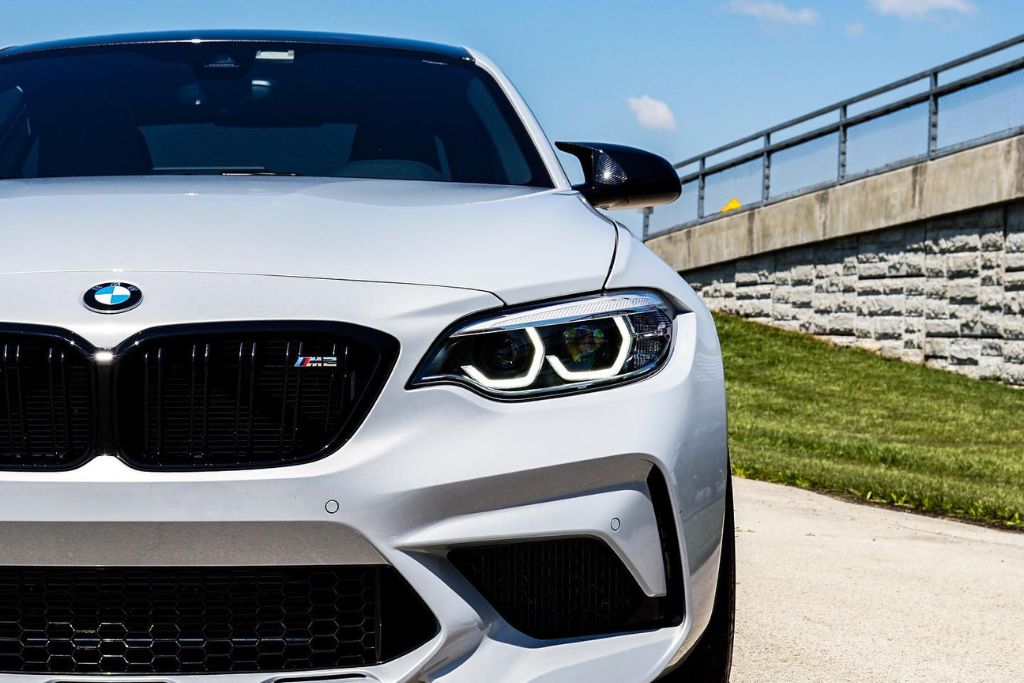
- Stone chips: Kicked-up gravel and loose stones from other vehicles can leave noticeable chips on your hood, fenders, or front bumper. PPF absorbs these impacts, shielding your paint from dings and divots.
- Bug splatter: Insect residue contains acids that can eat into your clear coat. PPF creates a barrier that prevents these biological contaminants from bonding with the paint.
- Road debris: Urban environments and construction zones throw sand, salt, and dirt at your vehicle. PPF repels these materials before they can scratch or stain the surface.
- Bird droppings: Often highly acidic, bird waste can etch into unprotected paint. With PPF, cleanup is easy, and the risk of permanent damage is significantly reduced.
- UV exposure: Over time, sunlight causes paint to oxidize and fade. High-quality PPF includes UV inhibitors that help preserve the paint’s depth and color.
- Scratches and swirl marks: Daily driving and improper washing can leave fine scratches or swirls. Modern PPFs feature self-healing topcoats that activate under heat—such as sunlight, warm water, or a heat gun—making these blemishes vanish.
PPF is particularly valuable for high-impact zones such as front bumpers, side mirrors, rocker panels, door edges, and rear fenders. Beyond protection, it can enhance a vehicle’s appearance with finishes such as gloss, matte, or satin, allowing car owners to customize their look while adding functionality. With professional installation and proper care, premium films can last between 10 and 12 years, making PPF one of the most cost-effective and long-lasting investments for preserving your vehicle’s condition.
How Paint Protection Film Works
Paint Protection Film (PPF) is not a single sheet of plastic—it’s a technologically advanced, multi-layered system designed to deliver superior durability, flexibility, and aesthetic protection. Each layer has a specific role, working together to shield your vehicle from environmental and mechanical damage while maintaining a crystal-clear appearance.
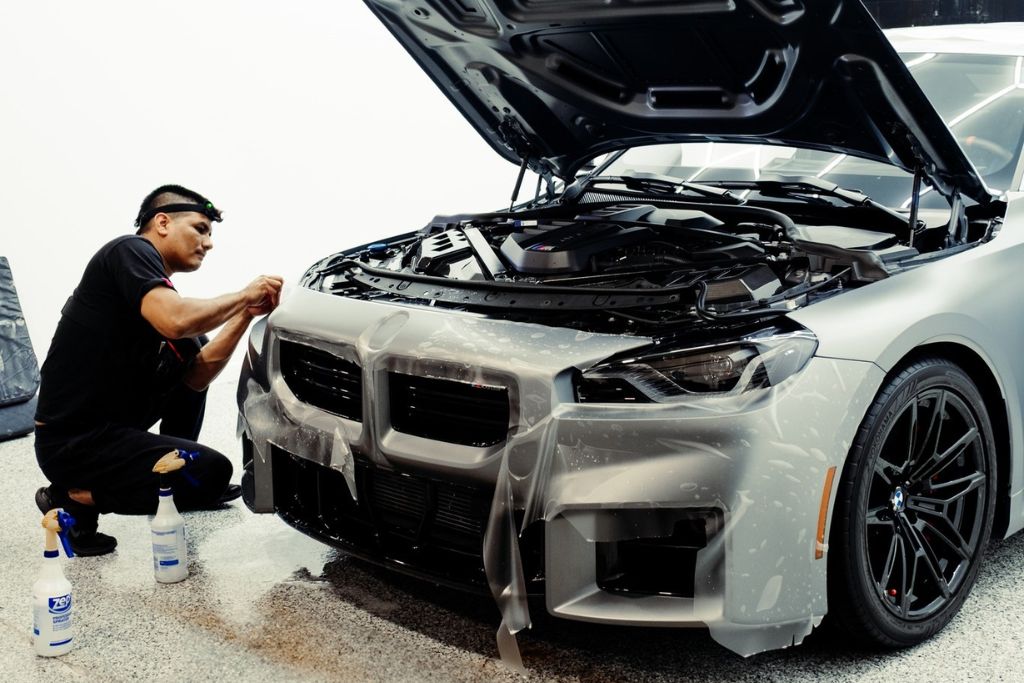
The Key Layers of PPF:
- Topcoat: This is the outermost layer and one of the most critical components. It provides resistance to stains, chemical contaminants, and UV rays. What truly sets premium PPF apart is its self-healing capability—thanks to elastomeric polymers in the topcoat, minor scratches, swirl marks, and blemishes naturally reflow and disappear when exposed to heat. This could be from the sun, a warm engine, or even a heat gun, leaving the surface smooth and looking freshly detailed.
- Polyurethane layer: The core of the film, this middle layer is made of a specialized thermoplastic urethane. It’s engineered to be both flexible and strong, allowing it to absorb and disperse the force of road debris, stone chips, and other physical impacts. This helps protect your car’s original paint from cracking, chipping, or denting. Its elasticity also allows the film to conform to complex curves and contours, ensuring seamless coverage even on intricate body lines.
- Acrylic adhesive: This base layer is what binds the film to your vehicle’s surface. It’s formulated to create a long-lasting bond without damaging the underlying paint. A key benefit of modern PPF adhesive is its repositionability during installation, which allows trained technicians to align and adjust the film with precision, minimizing the risk of bubbles, creases, or misaligned edges. Once cured, the adhesive forms a strong, stable bond that remains intact for years.
Together, these layers form an invisible yet high-performance barrier that adapts to temperature changes, resists daily wear, and maintains the factory finish of your vehicle. It’s a dynamic system—flexible enough to accommodate real-world conditions but rigid enough to prevent lasting damage.
The Real Benefits of Paint Protection Film
Investing in Paint Protection Film (PPF) goes beyond just preventing chips and scratches—it delivers a wide range of long-term benefits that enhance your vehicle’s performance, aesthetics, and overall value. Here’s a closer look at what makes PPF a wise choice for car owners:
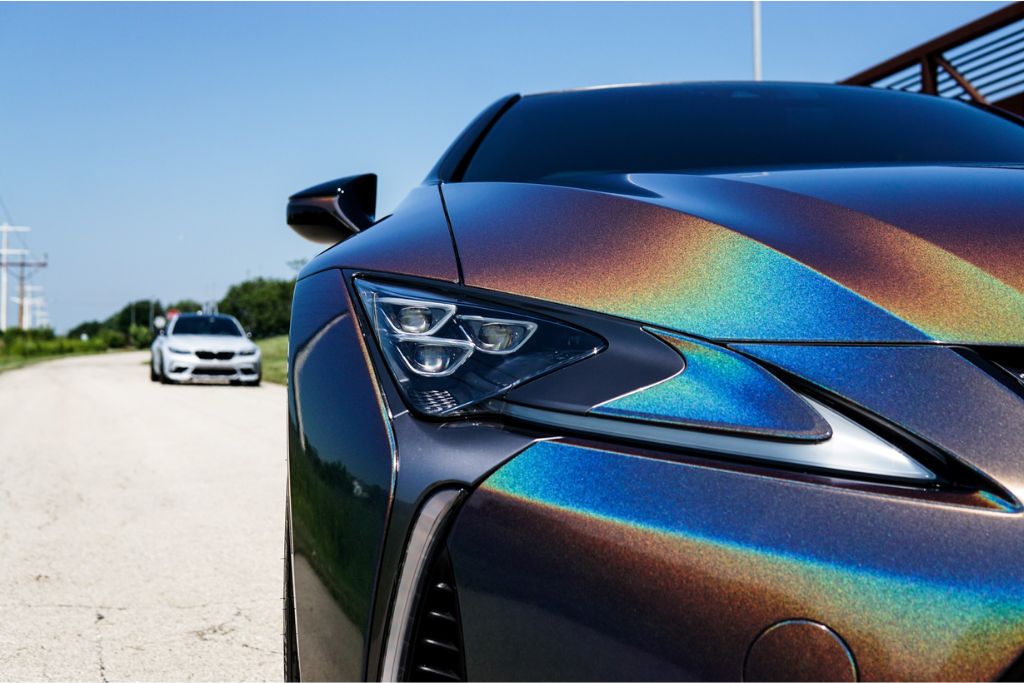
1. Paint Preservation
PPF acts as a durable barrier between your vehicle's factory paint and the many hazards it encounters daily, like road grime, UV radiation, bug splatter, and acid rain. It significantly reduces the chances of paint damage, fading, and oxidation. This means your car maintains its like-new appearance far longer, even in harsh climates or high-traffic areas.
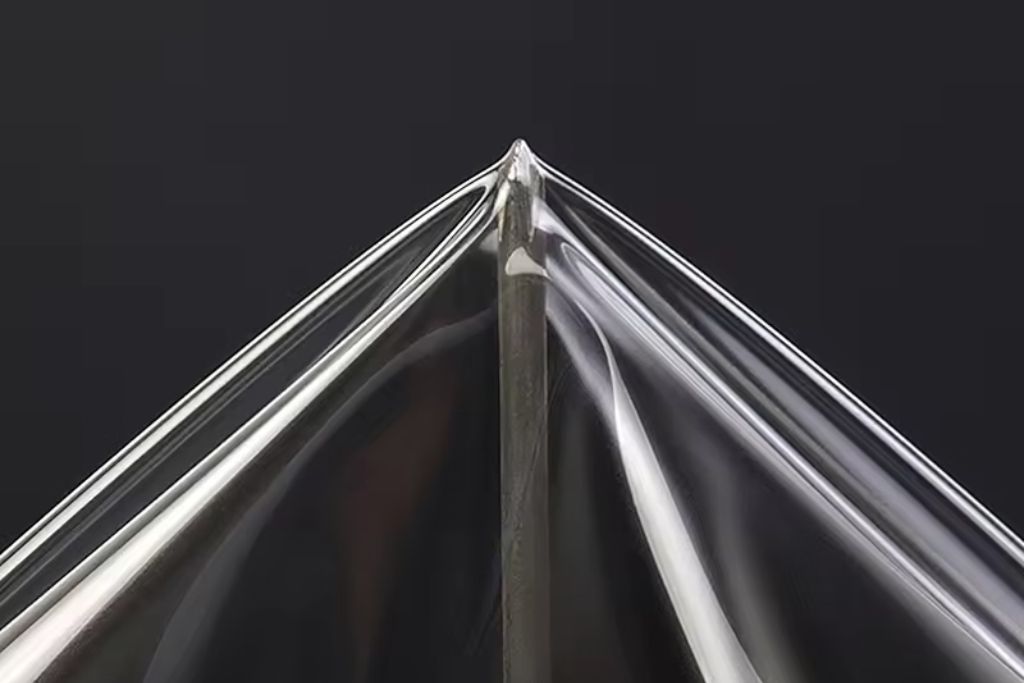
2. Self-Healing Surface
One of the standout features of modern PPF is its self-healing capability. Fine scratches and swirl marks—often caused by automated car washes, improper drying, or daily wear—can make a vehicle look older than it is. With PPF, those micro-abrasions disappear when the surface is exposed to heat, such as from sunlight or a heat gun. The topcoat's elastomeric properties reflow to restore a smooth, flawless finish without the need for polishing or buffing.
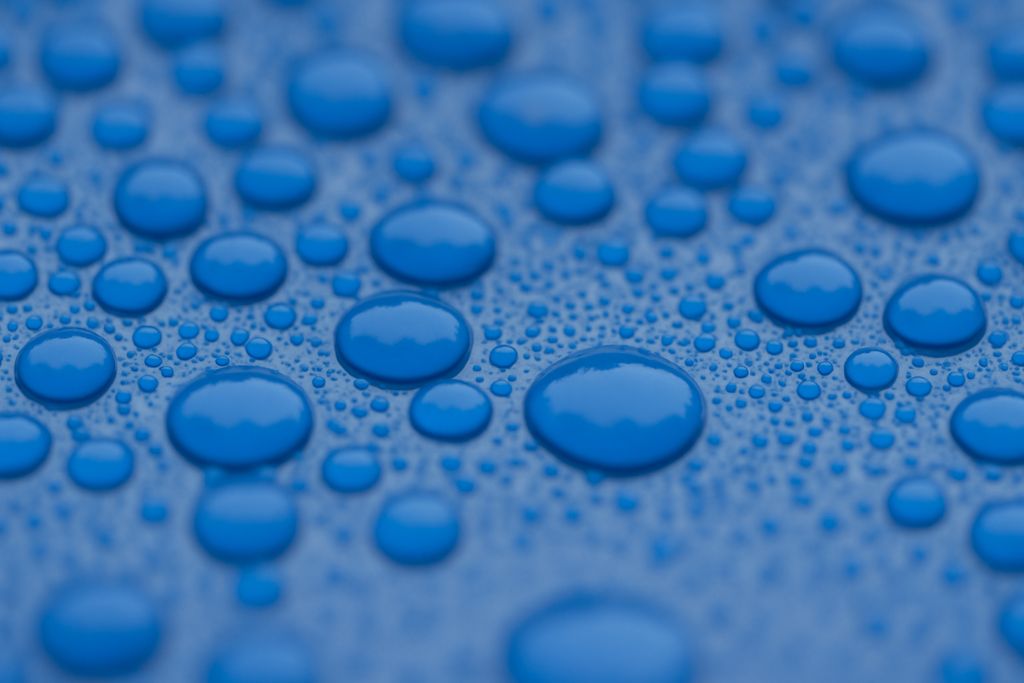
3. Hydrophobic Finish
Premium PPF products, such as XPEL, feature a hydrophobic top layer that actively repels water, dust, and other contaminants. This not only helps keep your car looking cleaner between washes but also makes the cleaning process much easier. Water beads off effortlessly, reducing the chance of water spots and saving time on maintenance.
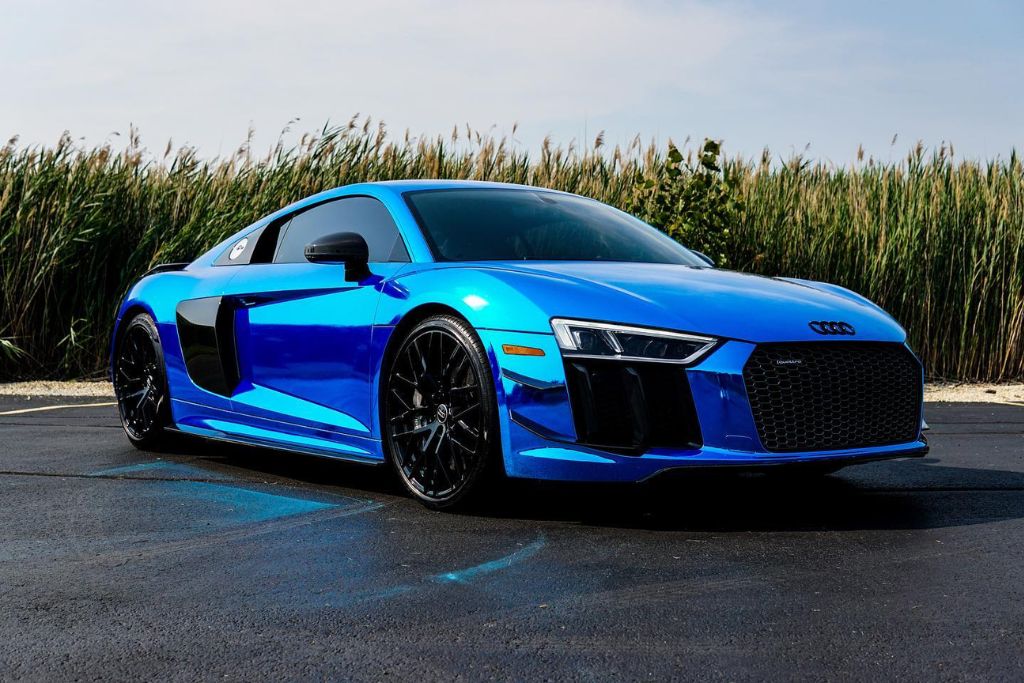
4. Improved Resale Value
A vehicle with pristine paint is far more appealing to potential buyers. Because PPF protects against chips, fading, and environmental damage, it helps preserve the car's exterior in near-showroom condition. This can lead to a noticeable increase in resale or trade-in value—studies have shown that vehicles protected by PPF can sell for up to 15% more compared to those without protection.

5. Invisible Protection
Unlike bulky bug deflectors or traditional car bras, PPF is optically clear and blends seamlessly with your vehicle's finish. Whether you choose a gloss, matte, or satin style, the film maintains the natural look of your paint while offering discreet but powerful protection. Once installed, it's virtually unnoticeable—but its benefits are undeniable.
Don’t wait until chips and scratches ruin your paint.
Experience the power of self-healing Paint Protection Film installed by Naperville’s trusted experts.
PPF vs. Vinyl Wrap vs. Ceramic Coating
Feature | Paint Protection Film (PPF) | Vinyl Wrap | Ceramic Coating |
Protection Level | High (impact, UV) | Low (aesthetic only) | Medium (chemical, UV) |
Appearance | Invisible / Glossy | Custom Designs | Enhances Gloss |
Durability | 7–12 Years | 2–5 Years | 2–5 Years |
Self-Healing | Yes (premium films like XPEL) | No | No |
Maintenance | Low | Moderate | Low |
PPF offers the most comprehensive protection. For added hydrophobicity, it can be layered with a ceramic coating.
The PPF Installation Process at Aesthetic Styling
- Surface Preparation: The vehicle is thoroughly cleaned to ensure optimal adhesion of the coating.
- Film Cutting: Film is precisely shaped using software or manual techniques.
- Application: PPF is applied using slip solution and heat tools; edges are wrapped seamlessly.
- Curing & Inspection: The film is bonded and checked for imperfections.
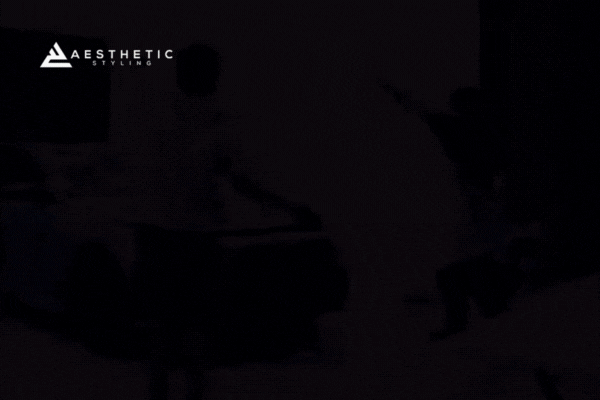
Why Professional Installation Matters
DIY kits often lead to issues like air bubbles or peeling. Expert installers at Aesthetic Styling ensure precise application and long-lasting performance.
Maintenance Tips for PPF Longevity
- Use pH-neutral soap when washing.
- Stick to microfiber cloths and mittens.
- Blot dry with microfiber towels.
- Avoid harsh chemicals or degreasers.
- Optionally apply ceramic coating over PPF.
- Keep pressure washers at least 12 inches away from the surface to prevent damage.
- Park in shade when possible.
- Inspect edges regularly for lifting or damage.
With proper care, PPF can maintain its clarity and effectiveness for over a decade.
Final Thoughts
Is Paint Protection Film Worth It?
For car owners in Naperville and beyond, PPF isn’t just a luxury—it’s a wise investment. Self-healing technology offers unmatched protection, aesthetics, and longevity.
Trust Aesthetic Styling for expert installation, high-performance XPEL film, and peace of mind backed by a 10-year warranty.
🚗 Schedule your consultation today and protect your ride with confidence.
People Also Ask (FAQs)
Why is PPF important for vehicles?
It shields paint from damage, preserving appearance and value.
What makes self-healing technology special?
Scratches disappear with heat—no repainting needed.
How does PPF differ from wax or ceramic coating?
PPF blocks physical damage, while coatings primarily protect against water and UV.
Why is professional PPF installation essential?
It prevents issues like bubbling or peeling and ensures longevity.
Why does PPF boost resale value?
Pristine paint signals proper care, increasing buyer appeal.
Why is PPF more durable than vinyl wrap?
It’s built for impact resistance, not just visual customization.
How is PPF maintenance different?
It’s lower-maintenance due to hydrophobic and self-healing features.
Do major brands recommend PPF?
Yes—brands like Tesla, BMW, and Mercedes use it to protect factory paint.
Why do new PPF technologies matter?
They enhance durability and visual quality, keeping vehicles looking newer longer.

